Match column I with colum II and select the correct option from the codes given below.
ColumnIColumnIIA.TCAcycle(i)Inner mitochondrial membraneB.F0−F1particles(ii)Hans KrebsC.End product of glycolysis(iii)Oxidative decarboxylationD.Pyruvate dehydrogenase(iv)Pyruvic acid
A-(ii),B-(i),C-(iv),D-(iii)
A-(i),B-(ii),C-(iv),D-(iii)
A-(ii),B-(iii),C-(iv),D-(i)
A-(iii),B-(ii),C-(i),D-(iv)
The correct Answer is:a
To solve the question of matching Column I with Column II, let's go through each item step by step.
1. Identify the first item in Column I: TCA Cycle
- The TCA cycle is also known as the Krebs cycle, named after Sir Hans Krebs who discovered it.
- Match: A (TCA cycle) matches with (ii) "Hans Krebs".
2. Identify the second item in Column I: F0-F1 particles
- F0-F1 particles are involved in oxidative phosphorylation and are located across the inner mitochondrial membrane.
- Match: B (F0-F1 particles) matches with (i) "Inner mitochondrial membrane".
3. Identify the third item in Column I: End product of glycolysis
- The end product of glycolysis is pyruvic acid (or pyruvate), which is produced from the breakdown of glucose.
- Match: C (End product of glycolysis) matches with (iv) "Pyruvic acid".
4. Identify the fourth item in Column I: Pyruvate dehydrogenase
- Pyruvate dehydrogenase is an enzyme that converts pyruvate into acetyl CoA through a process called oxidative decarboxylation.
- Match: D (Pyruvate dehydrogenase) matches with (iii) "Oxidative decarboxylation".
Final Matches:
- A matches with (ii) "Hans Krebs"
- B matches with (i) "Inner mitochondrial membrane"
- C matches with (iv) "Pyruvic acid"
- D matches with (iii) "Oxidative decarboxylation"
Conclusion:
The correct option based on the matches is:
- A - (ii)
- B - (i)
- C - (iv)
- D - (iii)
- The TCA cycle is also known as the Krebs cycle, named after Sir Hans Krebs who discovered it.
- Match: A (TCA cycle) matches with (ii) "Hans Krebs".
- F0-F1 particles are involved in oxidative phosphorylation and are located across the inner mitochondrial membrane.
- Match: B (F0-F1 particles) matches with (i) "Inner mitochondrial membrane".
- The end product of glycolysis is pyruvic acid (or pyruvate), which is produced from the breakdown of glucose.
- Match: C (End product of glycolysis) matches with (iv) "Pyruvic acid".
- Pyruvate dehydrogenase is an enzyme that converts pyruvate into acetyl CoA through a process called oxidative decarboxylation.
- Match: D (Pyruvate dehydrogenase) matches with (iii) "Oxidative decarboxylation".
- A matches with (ii) "Hans Krebs"
- B matches with (i) "Inner mitochondrial membrane"
- C matches with (iv) "Pyruvic acid"
- D matches with (iii) "Oxidative decarboxylation"
The correct option based on the matches is:
- A - (ii)
- B - (i)
- C - (iv)
- D - (iii)
Topper's Solved these Questions
- RESPIRATION IN PLANTSBOOK - NCERT FINGERTPS ENGLISHCHAPTER - RESPIRATION IN PLANTSEXERCISE - RESPIRATORY BALANCE SHEET
3 Videos
- RESPIRATION IN PLANTSBOOK - NCERT FINGERTPS ENGLISHCHAPTER - RESPIRATION IN PLANTSEXERCISE - AMPHIBOLIC PATHWAY
3 Videos
- RESPIRATION IN PLANTSBOOK - NCERT FINGERTPS ENGLISHCHAPTER - RESPIRATION IN PLANTSEXERCISE - FERMENTATION
15 Videos
- PLANT KINGDOMBOOK - NCERT FINGERTPS ENGLISHCHAPTER - PLANT KINGDOMEXERCISE - Plant Kingdom
160 Videos
- STRUCTURAL ORGANISATION IN ANIMALSBOOK - NCERT FINGERTPS ENGLISHCHAPTER - STRUCTURAL ORGANISATION IN ANIMALSEXERCISE - Structural Organisation In Animals
129 Videos
Similar Questions
Knowledge Check
Match column I with column II and select the correct option from the codes given below.
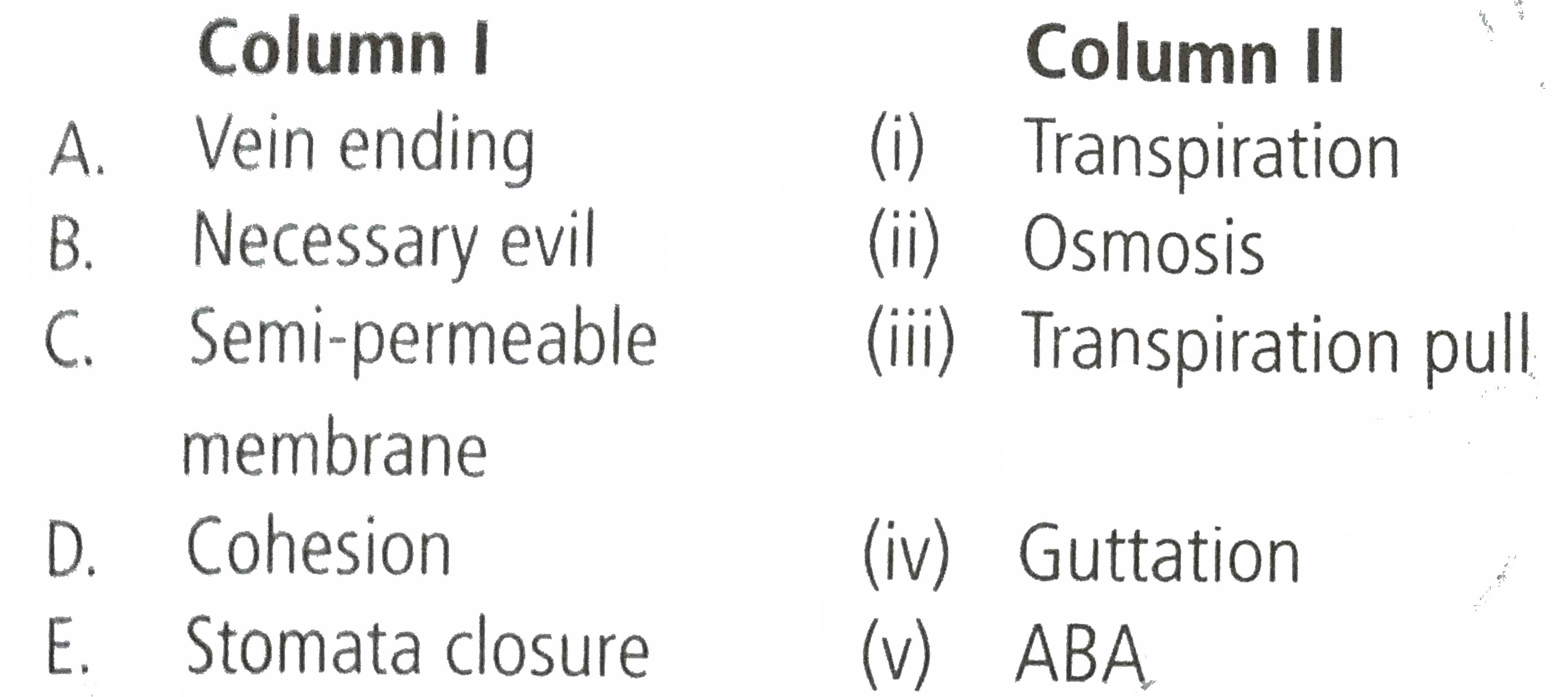 A(i)-D, (ii)-C, (iii)-A, (iv)-BB(i)-A, (ii)-B, (iii)-C, (iv)-DC(i)-D, (ii)-B, (iii)-A, (iv)-CD(i)-A, (ii)-C, (iii)-D, (iv)-B
A(i)-D, (ii)-C, (iii)-A, (iv)-BB(i)-A, (ii)-B, (iii)-C, (iv)-DC(i)-D, (ii)-B, (iii)-A, (iv)-CD(i)-A, (ii)-C, (iii)-D, (iv)-BMatch columnI with column II and select the correct option from the codes given below.
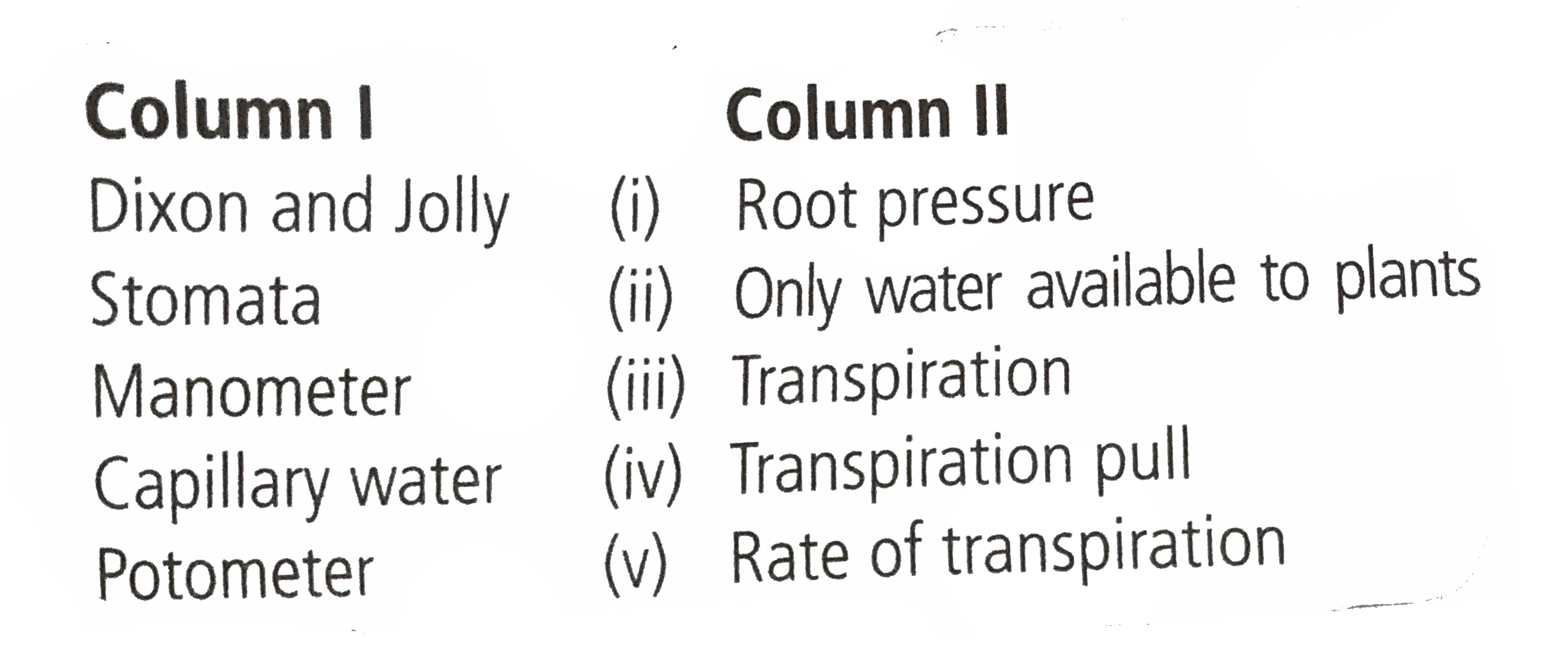 AA−(iv),B−(iii),C−(v),D−(ii),E−(i)BA−(i),B−(iii),C−(iv),D−(ii),E−(v)CA−(iv),B−(iii),C−(i),D−(ii),E−(v)DA−(v),B−(iv),C−(iii),D−(ii),E−(i)
AA−(iv),B−(iii),C−(v),D−(ii),E−(i)BA−(i),B−(iii),C−(iv),D−(ii),E−(v)CA−(iv),B−(iii),C−(i),D−(ii),E−(v)DA−(v),B−(iv),C−(iii),D−(ii),E−(i)Match column I with column II and select the correct option from the codes given below.
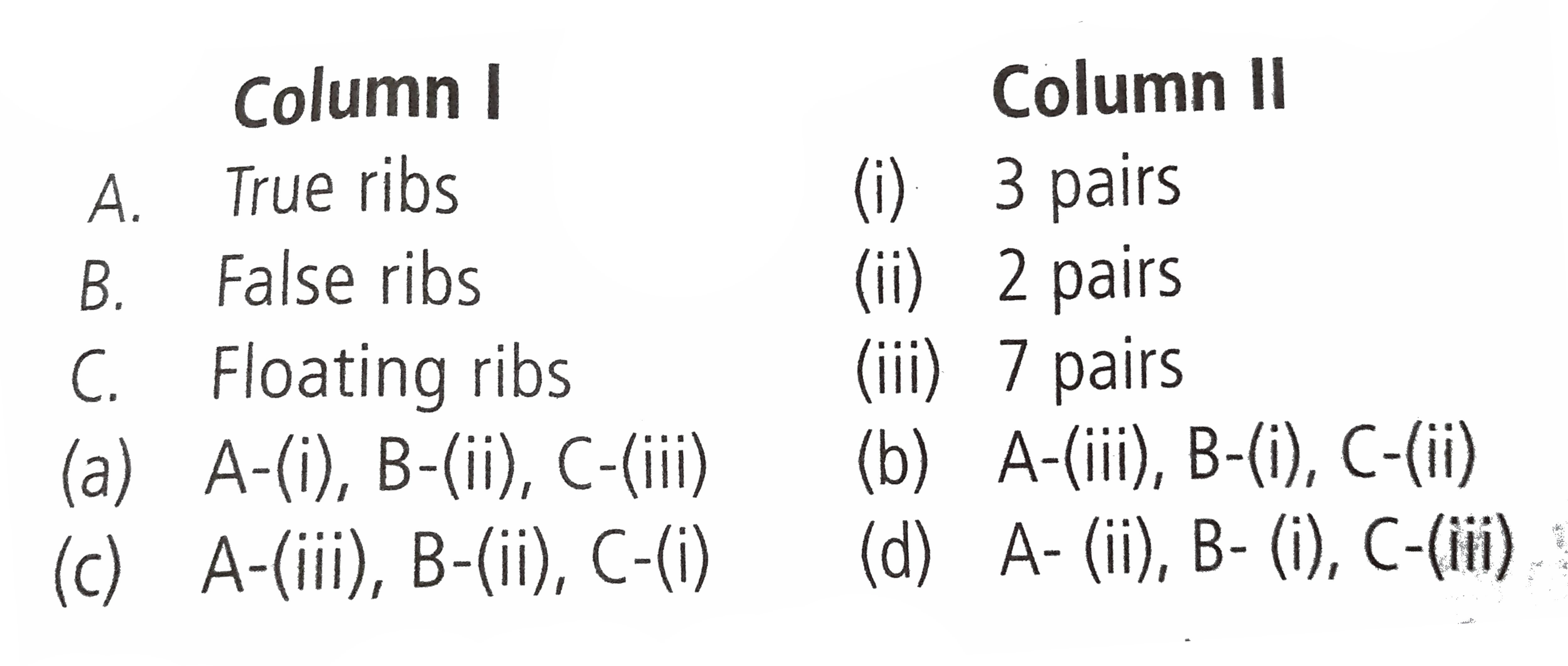 AA-(i), B-(ii), C-(iii)BA-(iii), B-(i), C-(ii)CA-(iii), B-(ii), C-(i)DA-(ii), B-(i), C-(iii)
AA-(i), B-(ii), C-(iii)BA-(iii), B-(i), C-(ii)CA-(iii), B-(ii), C-(i)DA-(ii), B-(i), C-(iii)
Match Column I with column II and select the correct option from the codes given below:

View SolutionMatch Column I with column II and select the correct option from the codes given below:
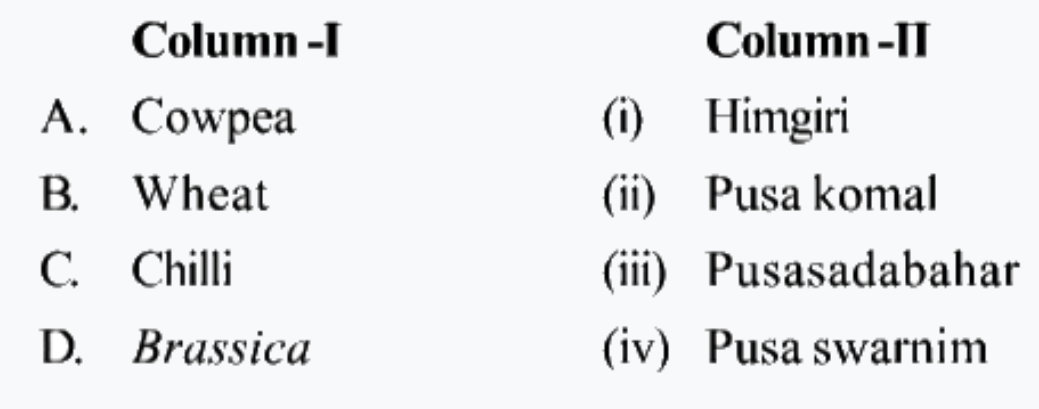
View SolutionMatch column-I with column-II and select the correct option from the codes given below :
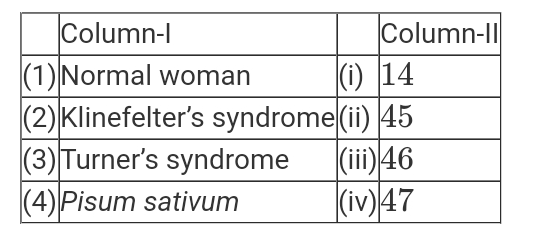
View SolutionMatch column I with column II and select the correct option from the codes given below.

View SolutionMatch column I with column II and select the correct option from the codes given below.

View Solution

